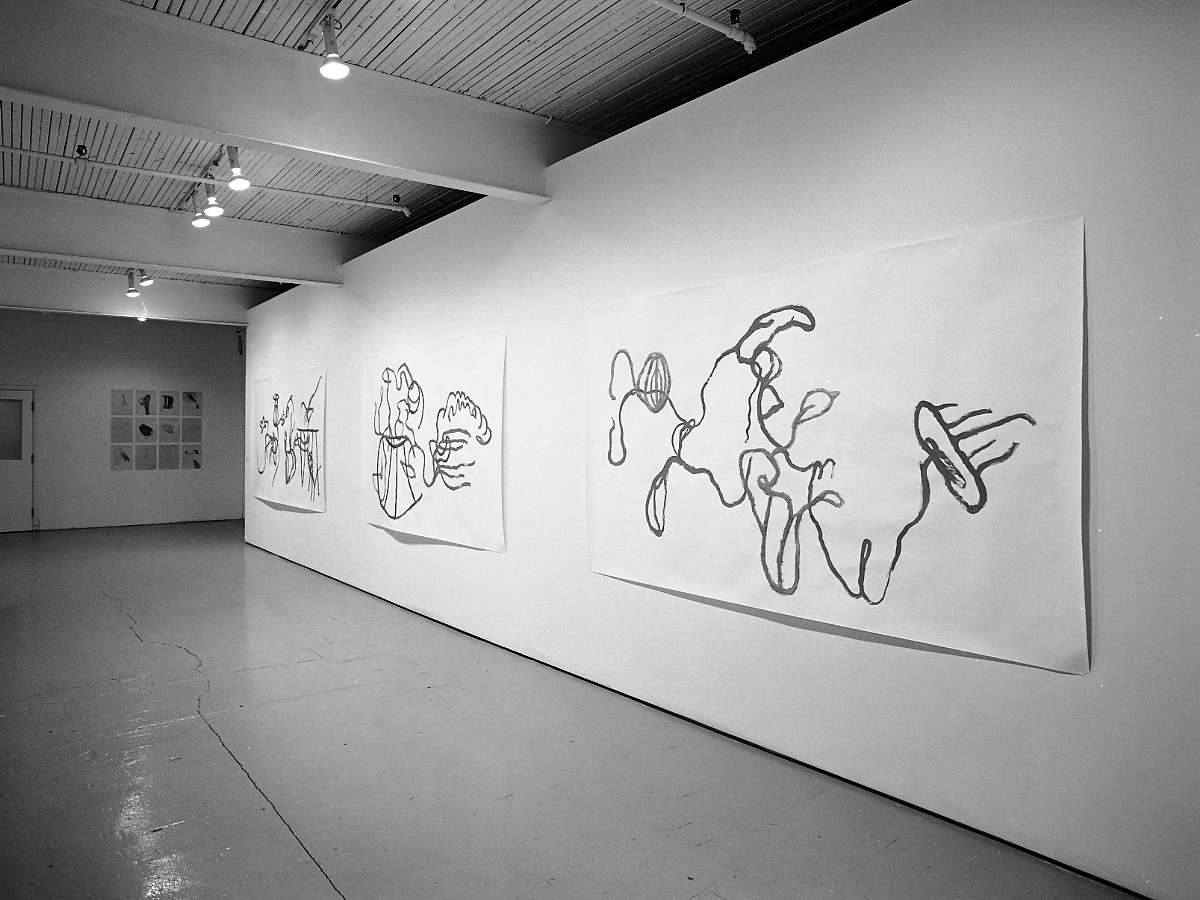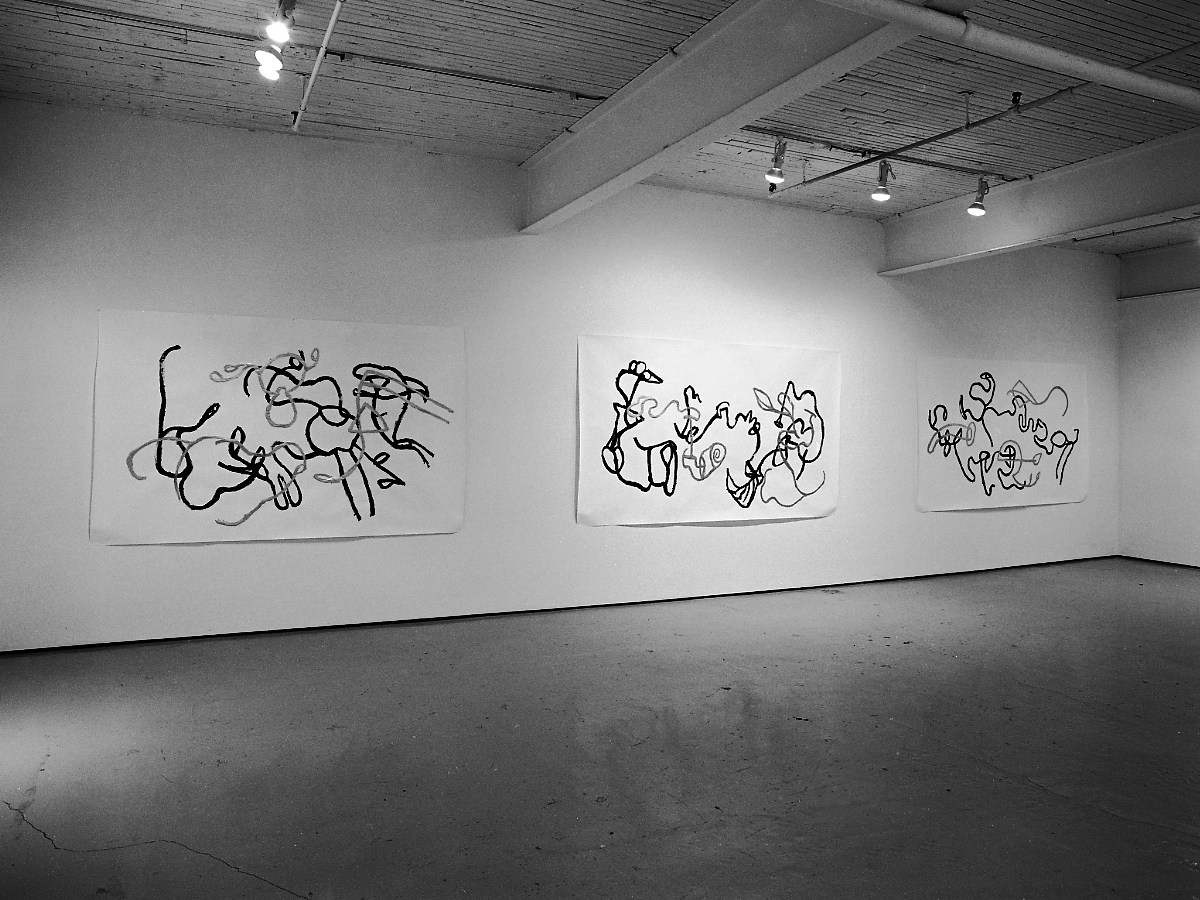This exhibition features large drawings by Swiss artist Marianne Eigenheer from 1985, including one wall-drawing executed in situ, complemented by a selection of related works from 1977 to 1979.
The duplication of animals may provide a further clue to interpretation. Inner duplication is already given through self-reference, and female human beings possess duplication through their capacity for giving birth. Child or man - they are both identical in origin and born of woman, who thus may see a sameness in them. The extinction of man since he can find himself only as part of woman? We can merely raise the question without answering it, for these pictures only hint at explicit questions signifying indeterminacy - an indeterminacy, however, that also has a function. They recur to latent dimensions sifted through a filter that razes, neutralizes and annihilates the spontaneous immediacy of life."
Marianne Eigenheer
Aldo Walker
Mercer Union
Toronto
January 14 to February 8
Jerry McGrath
Vanguard, April 1986
In a show curated by Andreas Gehr, these two Swiss artists fall into the same camp when compared superficially. Eigenheer and Walker show a similar spareness of line held to the sober project of examining perception.
Walker's images are white outlines on a matte-black ground. Immediately noticeable is their resemblance to the kitsch side of black-velvet painting. Whatever the extent of such example in Europe, one may suppose the North American viewer to be wary of how the artist begins to engage us. A gallery statement assures us that Walker's works are "illustrations of the dissonant relationship between the sign and the signified." In pursuit of this failed congruence he can follow the semiologists and dig down low. Many of his figures have the infantile porkiness of Elmer Fudd minus shotgun, hunting hat and all. And. with all else out of the way, we can recall Hans Bellmer, whose cool eye reflected the cold bottoms of dolls. The human and the porcine find other points or similarity in the treatment of the limbs; the near-human, to be more accurate, is often given what might be either short trotters or fins. A few other illustrations show these cartoonish creations defecating and urinating. Following Bataille, Walker wants to deconstruct our moral equipment. Bataille invoked chickens by having his little heroine break eggs with her arse; to seek for himself our acquittal Walker goes back to the barnyard.
Eigenheer's perspective, according to a gallery statement, is feminist: "she views the new painting as patriarchy's last desperate stand." Her means in this show are almost exclusively two meandering lines of different colour promising, but never strongly conferring, objecthood. Yet, elements can be recognized from modern art; from Picasso she gets a stylized knife-wielding hand - fat butt-ends of finger ranged along an edge of an abstract form and a simple horn of the saucer-on-a stick variety. Something of Dubuffet runs through her robust line, colonizing space not in order to build there a house, a fence or a tree but simply to be only what modernism asked of it: itself. Patriarchy's last stand seems to be taking place in Eigenheer's own psyche. Is this a process of exorcism? Is this gnarled, ginger-root profusion the departure of those spirits? If borrowing is more her purpose, then it seems only an intermittent need. More often than not her lines seek the self-sufficiency which emerged from abstraction. Indeterminacy may be the condition she thinks necessary to engage the viewer via his/her subjectivity (as if being more forthright as an artist might emulate a didactic model). However, there is too much of it.

